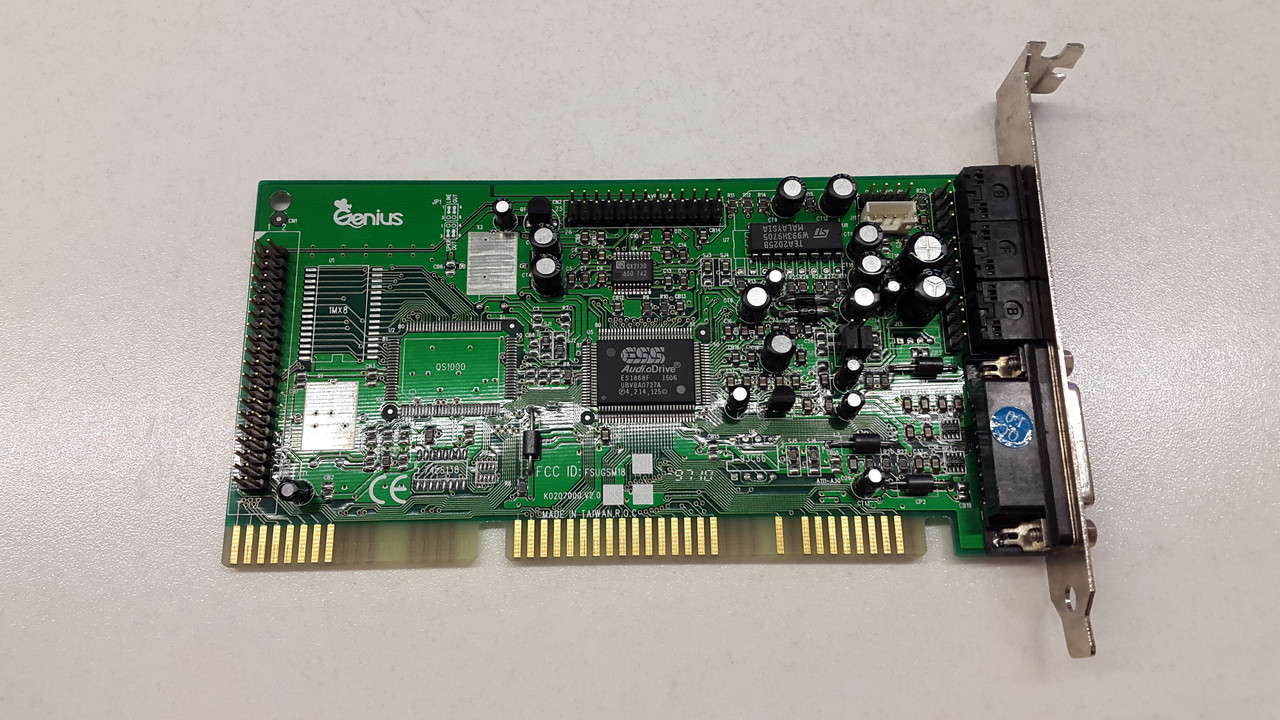First post, by athlon-power
- Rank
- Member
When I first got that 486, I had two things in mind that I knew I immediately needed to get for it: cache, and a sound card. I got the cache- first, I tried to use 128k, realized I needed a TAG chip, so got a set of 256k, found that some of the 256k chips were bad, and then used some of the chips originally intended for the 128k, and they worked together to make 256k.
When I started working on getting a sound card, I needed something SB16 compatible, so I bought a Vibra 16c on eBay. Between me purchasing the 16c and receiving it in the mail, I found a SS7 system for $5 at a thrift store, alongside a PB monitor and a couple of other things. There was an ISA ESS1869 sound card in there, and I had remembered seeing PhilsComputerLab where he had been messing with an ESS1868, and decided to use it instead.
When I first started using it, I got some DOS drivers online, and everything seemed to work great. I even installed Windows, got drivers for it, and it still was doing well. When I had to re-install DOS, I never got it working the way it did again. Here's what has happened:
When I installed the DOS drivers, got the IRQ and DMA "correct," the sound was fine. Both MIDI and sound effects worked great (mainly these tests were done in DOOM). I installed Windows 3.1, installed the drivers, went back to DOOM, the midi was fine, but the sound effects were awful. They sound crunchy, and far more "low-res," than they should've. I re-installed, didn't install Windows, and it worked just fine.
Later on, I decided to try Windows 95, struggled to find drivers for the card (most of them were broken), and when I did find a driver that worked, I had to manually change the IRQ to something DOOM could see before I got any sound effects from it under Win95. It worked great, but Windows 95 lied, because I get worse performance in DOOM under Windows than in DOS, not better or equal performance. I tried restarting Win95 in DOS mode, but in that mode, I could only get MIDI sound, no sound effects whatsoever, even when I set everything correctly in DOOM setup.
So then I changed back to DOS 6.22, installed the sound drivers, launched DOOM, and without Windows being there, that "crunchyness," had returned. So, I went back online, suspecting it was the drivers, got DOS drivers specifically meant for the ESS1869, installed them, but when I tried to run them, it said that the card was configured via PnP, and that it could do nothing. The IRQ and DMA numbers were crazy, way above what DOOM could ever hope to see, and in the BIOS of this machine, there is no way to disable PnP, nor is there any jumpers on the card or motherboard to disable PnP.
Will I have to break and spend the money on an OG SB16 that has no PnP? Would the Vibra 16c work in DOS better than the 1869, or would it be the same, and if I used it, would the audio (mainly the MIDI) sound like garbage?
I also have a non-PnP (I think, it has a little box with DIP switches on it that you can flip back and forth to change the IRQ and so on) Future Domain SCSI card installed, with an attached CD-ROM. I doubt it's the SCSI card, as it was working fine before with said card, and I doubt it has to do with the mods I made to the 486 before, as this problem was present when it was in its old case, unmodified. I'm not currently at that PC, so I can't really get much more information at the moment, but I don't want to give up on it and just have a 486 lying around, unused. I've wanted a 486 for years, and I'll be damned if I am going to let it go to waste, especially after spending a week and a half modding it into that new case.
Where am I?



